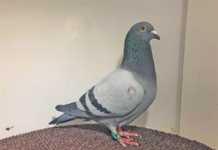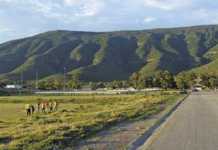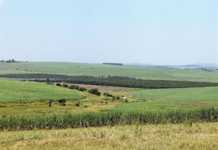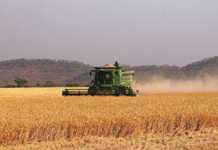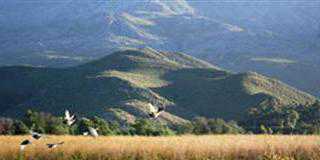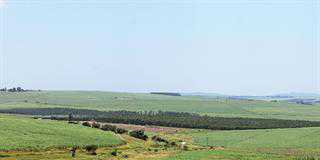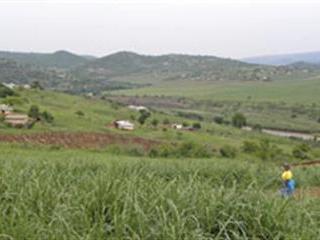
Mansomini Irrigation Co-operative, situated in the heart of the Glendale Valley on the KZN North Coast, was established as a sugar cane growing initiative in 1982. With the help of Glendale Mill, which offered financial and agronomic support, small-scale growers successfully achieved optimum production on 168ha. However, when the mill closed in the late 1990s, production faltered. An ensuing drought was the final nail in the coffin and the lush crop turned to weeds and dust.
Victoria Khuzwayo, an active 72-year-old who was involved in establishing the co-operative, says the economy of the area disintegrated when the sugar cane cheques dried up. “People were crying because of starvation. There were no jobs and no money. The shops closed and we had to go to Stanger 30km away to buy food,” she recalls. But today, there is renewed hope in the valley. Sugar cane is once again being grown by the co-operative, the shops are reopening and there are jobs.
The turnaround
The revitalisation of Mansomini can largely be attributed to the determination of three people: Victoria; her son-in-law Siyabonga Madlala; and Gordon Spalding, Gledhow Sugar Company land reform manager. Siyabonga and Victoria fostered a relationship with Gordon – and this relationship became the catalyst for accessing funding. “Victoria is a fantastic, salt of the earth woman who does everything with good intentions. Coupled with Siyabonga’s business acumen, we felt the Mansomini project had the necessary drive and maturity to be a sustainable success,” explains Gordon.
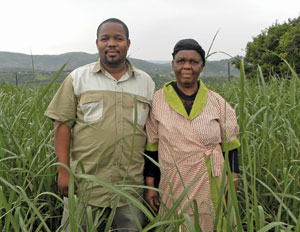
Project co-ordinator Siyabonga Madlala and Mansomini Irrigation Scheme chairperson Victoria Khuzwayo.
Siyabonga was appointed project leader at Gledhow’s request and Victoria was appointed co-operative chairperson. They successfully applied for a R3,5 million loan from the Micro Agriculture Finance Institute of South Africa (Mafisa) via the SA Sugar Association (SASA) to redevelop 168ha of sugar cane lands. A further R2 million grant from the Department of Rural Development and Land Reform’s (DRDLR) Recapitalisation and Development Programme (Recap) was obtained.
Funding was used for replanting, as well as for infrastructure for irrigation and roads, security and the re-establishment of a 5ha vegetable garden. As the land had been out of production for some time, it was a challenge to get it back into production. Technical support was provided by the SA Sugar Research Institute (Sasri), SA Canegrowers, the DRDLR, North Coast Pest & Diseases Committee, and Gledhow Sugar Company extension staff. SASA’s general manager for land reform and rural development, Anwhar Madhanpall, gave invaluable support.
The first harvest from the revitalised Mansomini project is underway with 14 716t delivered to the mill to date for the 2012/2013 season. The farmers are achieving 88t/ha with 13,5% recoverable value, 0,5% higher than the mill average. Now that their irrigation system is complete, yields of 120t/ ha should be achievable in the next season.
Once cane revenues are received for the 2012/2013 milling season, the project will be in the black. With gross income of R6 million, growers should be left with about R1 million in the bank. “It will be shared in the form of dividends. It is clean profit from land that has been lying fallow,” says Siyabonga. And at a payback rate of R1 million per year, the Mafisa loan should be paid off in three or four years.
Organisational structure
The milling company has mapped by GPS each field of the 75 co-operative members, and this is used to determine the split of profits and expenses. An economic advisor from SA Canegrowers regularly meets with the co-operative and does a budget review, while administration and close monitoring of the finances are done by Gledhow Sugar Company.
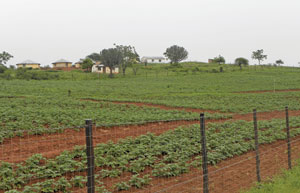
Potatoes are currently being grown in Mansomini’s 5ha community garden.
“We farm under one grower code and have a cession with the mill which covers payment for all costs except labour. Nobody gets paid until the harvest is complete. Most members are involved in the day-to-day running of the scheme and are aware of what is being done and what the challenges are. They know how the budget is being spent month by month,” says Siyabonga.
When it comes to employment, the scheme has a ‘family first’ approach. In total 21 permanent and 87 seasonal jobs have been created, with 646 beneficiaries (growers and their immediate family members) benefiting. “The revival of the local community and job creation have been the most important benefits of the project,” Siyabonga says. The co-operative is now looking at expanding its horizons.
“We have applied to Recap for funding for a 20ha extension with a booster pump for irrigation. We would also like to participate in downstream opportunities such as transport and harvesting. We currently pay R1,5 million or 25% of income to contractors to harvest 15 000t. We have applied to DRDLR for tractors to service the whole community,” Siyabonga says. DRDLR Minister Gugile Nkwinti recently visited Mansomini and was highly impressed by what he saw.
“He gave our expansion plans his blessing. This has been a groundbreaking project for Glendale Valley. It has given confidence to investors and other communal projects have followed,” Siyabonga says. Currently, about 1 200ha is under small-scale production in the Glendale Valley, with potential in excess of 3 000ha. Two other small-scale grower projects are already up and running: DakaDaka and Zubane. DakaDaka
has 234ha and 150 beneficiaries. Siyabonga is helping to get finance, and R9 million in grant funding has been received already. Of this, R4 million has been spent on replanting cane which will be harvested next year. A further R5 million is being used to resuscitate irrigation infrastructure. Zubane, with 100 growers and 581 beneficiaries, has planted 138ha and the first sugar cane crop is expected to be harvested in the 2013 season.
“These co-operatives receive institutional support to the tune of R21 million,” says Gordon. “Gledhow Sugar Mill, the government, SASA, SA Canegrowers and Sasri oversee the project since financial controls need to be fostered in future. The Mansomini community also deserves recognition.
“These developments will be successful because every activity utilises local capacity right down to the catering of training sessions.” If all goes well, Glendale Valley should soon be in a position to offer the youth an opportunity to earn a meaningful living. “Government sees this as an opportunity to establish a rural node offering all the value added outputs,” concludes Gordon.
Contact Siyabonga Madlala on 071 216 7974 or at [email protected].

